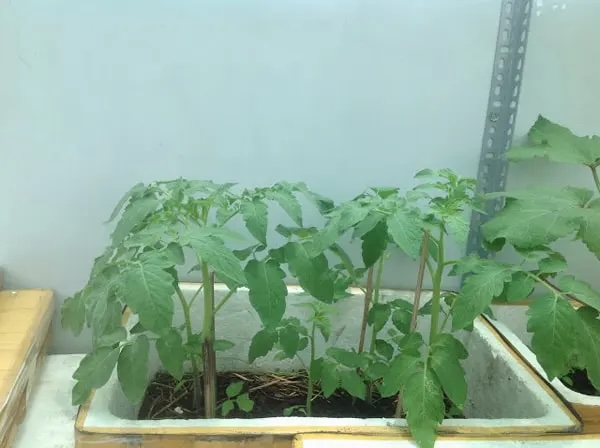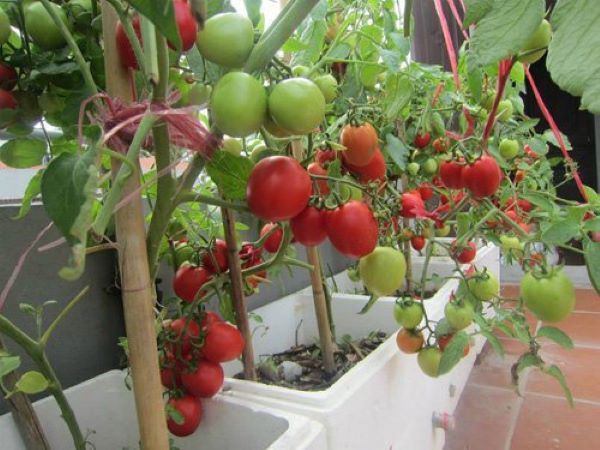Choosing the Ideal Time to Plant Tomatoes
Many wonder about the best time to plant tomatoes to achieve high yields. Although tomatoes are available in markets year-round, determining the optimal planting window remains crucial for successful harvests.
Tomatoes are fast-growing plants, so they can be cultivated at any time of the year. In the past, farmers typically chose winter for tomato planting. However, thanks to advancements in agricultural science and technology, tomato cultivation has become more flexible and is no longer confined to a fixed season.
For your convenience in planting, you may refer to the following specific time frames:
– Early Tomato Planting: From July to August. Harvest will be around late October through December.
– Main Crop Tomatoes: Starting from September to October, you can harvest from February to March the following year.
– Late Tomato Seed Sowing: If you wish to grow another crop, you can start from November to December, harvesting from March to April the following year.
Knowing the right timing will ensure you get fresh and high-quality tomatoes.

Knowing the right planting time will ensure you get fresh and high-quality tomatoes.
Preparatory Steps Before Growing Tomatoes in Tubs
Selecting the Most Suitable Tomato Variety
There are numerous tomato varieties available on the market today, from cherry tomatoes to chocolate tomatoes and pear-shaped ones, offering diverse sizes and colors. You can choose the type that appeals to you the most. Among them, organic tomato varieties are gaining popularity for their high yields and ease of care.
Buying seedlings is also straightforward; you can find them at nurseries or grow them from the seeds of ripe tomatoes. However, to ensure vigorous and fruitful plants, selecting high-quality seeds from reputable sources is vital.
Choosing the Planting Location
Tomatoes thrive in sunny conditions, so select a planting spot that receives ample sunlight. Avoid placing the tubs in damp or shaded areas, as this will hinder the plants’ growth and make them more susceptible to pests and diseases. When grown in a sunny location, tomatoes will flourish and produce more fruit, guaranteeing both quality and quantity.
Thorough preparation in the initial stage will set the foundation for a lush and fruitful tomato garden.
Selecting Containers for Tomato Cultivation
Tomatoes are capable of vigorous growth, developing extensive root systems. As the plants mature, they will sprout multiple branches and grow rapidly, hence the importance of choosing the right containers. This decision will not only influence the plants’ development but also determine their eventual quality and yield. In urban settings, tubs, buckets, or large pots are commonly used. Ensure that these containers have ample drainage holes at the bottom to prevent waterlogging when over-watering occurs.
Soil Selection for Tomatoes
Tomatoes can grow in various types of soil, but using organic soil offers significant benefits for their growth. To enhance the soil’s nutrition, you can mix in rice husk or well-rotted manure. If you can’t prepare your own, agricultural stores usually offer ready-made soil mixes that are ideal for tomato cultivation. The careful preparation of containers and soil plays a crucial role in creating optimal conditions for the plants’ long-term sustainability.

Tomatoes can grow in a range of soils, but organic soil provides significant benefits for their growth.
Two Methods for Growing Tomatoes in Tubs
Guide to Growing Cherry Tomatoes in Tubs from Seeds
Here is a simple process to grow cherry tomatoes from seeds in tubs:
Step 1: Select Quality Seeds
First, choose high-quality seeds to ensure a high germination rate and robust plant growth.
Step 2: Sow the Seeds
Once you have your seeds, sow them into the tubs, maintaining adequate spacing between seeds to allow for each plant’s growth.
Step 3: Provide Moisture
Water daily to keep the seeds moist. Once they have germinated and produced leaves, place the tub in a location with moderate sunlight. A tip is to elevate the tub to prevent rodents and other pests from damaging the seeds.
Step 4: Transplant the Seedlings
When the seedlings reach a height of 10 to 20 cm, you can transfer them to larger tubs. Loosen the soil by adding a layer of ash at the bottom or incorporating fresh rice husk to improve aeration. If using large tubs with a substantial growing medium, you can plant 2-3 seedlings per tub, at a depth of about 4-5 cm. Keep in mind that the roots of cherry tomato plants will soon develop new roots, promoting more vigorous growth.
With these simple steps, you’ll be well on your way to growing robust and fruit-laden cherry tomato plants.
Guide to Growing Tomatoes in Tubs from Suckers
To grow tomatoes in tubs from suckers, you’ll need the following materials and tools:
– Tomato Suckers: Choose healthy, moderately mature suckers with vibrant colors and no signs of pests or diseases.
– Clean Water: Use tap water that has been left to stand for 2-3 days to allow chlorine to evaporate, or source water from a trusted supplier.
Steps to Follow:
– Step 1: Select a ripe tomato, wash it, and cut it into thin slices, about 4-5 pieces, ensuring they are thick enough to support growth.
– Step 2: Arrange the tomato slices on the soil surface in the tub, maintaining adequate spacing between them and avoiding the edges to give the plants room to grow.
– Step 3: Cover the slices with a thin layer of soil, being careful not to compact the soil too much, as this could hinder root development.
– Step 4: Water gently to moisten the soil, maintaining moisture for the plants. After about 12 days, you’ll notice seed germination. Once the seedlings are well-established, you can either transplant them into the ground or continue growing them in the tubs until they reach your desired size.
With this method, you’ll be rewarded with robust tomato plants capable of producing an abundance of delicious fruit.

This method will result in robust tomato plants capable of producing an abundance of delicious fruit.
Important Considerations for Growing Tomatoes in Tubs
When growing tomatoes in tubs, pay attention to the following aspects to ensure healthy plant growth and high yields:
Watering Schedule
For the first 7-10 days after planting, water your tomatoes consistently each morning or around 4-5 pm. Water at the base of the plant and avoid wetting the leaves to minimize the risk of pest and disease issues. Rice water is also an excellent choice for watering, providing natural nutrients to the plants.
Appropriate Water Quantity
Adjust the water quantity according to the growth stage of your tomatoes. For young plants, about 500ml of water per day is sufficient. As they start flowering and fruiting, increase the water supply to prevent wilting and fruit drop.
Providing Support
When your tomato plants reach 1.5 to 2 months of age, construct a trellis or provide stakes to support their stems. Bamboo, wood, or plastic pipes can be used to prevent stem breakage when the plants bear fruit.
Fertilizer Application
To boost the plants’ nutrition, apply dynamic fertilizer when they begin flowering and fruiting. After about two weeks of fruiting, fertilize again to support the plants’ growth and ensure the best fruit quality.
With these considerations in mind, you’ll be well-equipped to successfully care for your tomato plants in tubs, leading to vigorous growth and bountiful harvests.



































